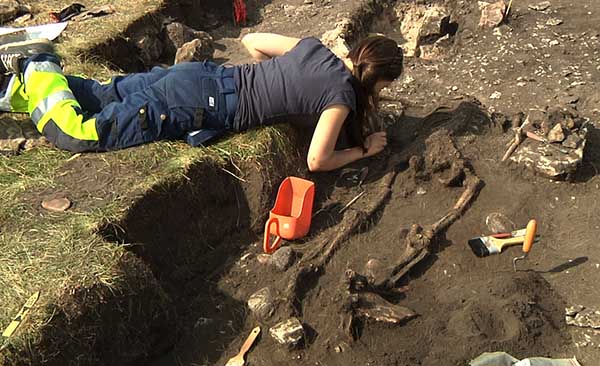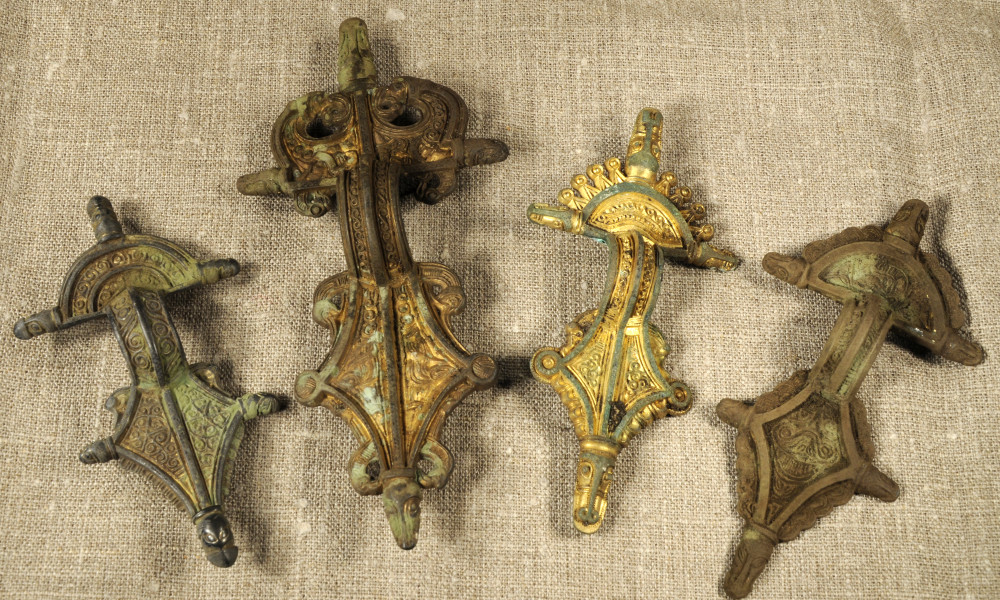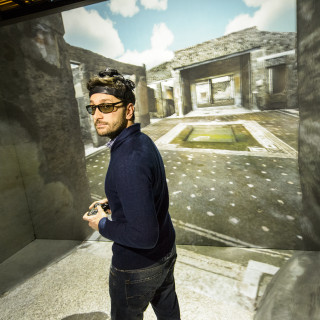Violent deaths in island massacre
It feels like a modern horror film. A day like any other. An ancient fort full of people closing the gates and going to bed. The guards are surprised by a well-organised enemy, who quickly and efficiently breaks in, kills everyone and leaves them lying where they fell, before leaving the site, which remained completely untouched for over 1 500 years.
Sandy Borg on the Swedish island of Öland is described by archaeologists as a Scandinavian Pompeii. A place where time literally stood still. Until 2010, when the excavations started.
“Sandy Borg gives us a snapshot of a day in the Migration Period (375-550 AD)”, said Helena Victor, Doctor of Archaeology at Kalmar County Museum, who is in charge of the project. “As archaeologists, we often work with long time spans and a find like this is unique.”
The project has attracted huge international attention; a video published on YouTube spread like wildfire and was watched by over a quarter of a million people in the space of just a few days. But what was it that happened at Sandy Borg and how come no one returned there for almost 1 600 years? Helena Victor paints a bloody picture of violent death.
“Some people entered the fort. We don’t know why, but we know that they killed everyone there, probably some 200 people. We know that they didn’t plunder thoroughly because we have found so many items of value. We know that they closed the door of at least one of the many houses when they left and we know that no one returned afterwards.”
Relatively little is known about how people lived in the Migration Period, but one thing we know is that it was their custom to cremate the dead. There was no one left to burn their loved ones, and no one who could go to fetch help.
“This also shows that there were strong feelings of some sort behind the attack. I don’t know whether it was a revenge attack, or a punishment for something”, said Helena Victor. “However, the fact that no one came back speaks for itself. Either they were forbidden from doing so, or they considered the place cursed and didn’t dare.”
It is also interesting that the attackers closed the door when they left one of the houses. This meant that the bodies that have been found there are intact because no animals such as foxes, dogs, cats or birds could enter and damage them.
“We have no idea why they closed the door behind them”, said Helena Victor, “but from an archaeological point of view it provides us with a large amount of information that we wouldn’t otherwise have had. The bodies are undamaged; we can see exactly how they fell, the angle of the legs and the injuries they have, and this could also help give us a clearer picture of what happened on that ill-fated day.
“It feels a bit like a murder mystery. We know that something happened, but not why or who did it. Neither do we know who lived in the fort and why they were there.”
There is no doubt that Sandby Borg is a veritable archaeological goldmine. The project is being run by Kalmar County Museum; there is little funding and despite the fact that in three years they have only been able to excavate roughly one per cent of the total area of the fort, a number of unique finds have already been made.
“Sandby Borg is a fairly unusual ancient fort; for example, it is only 50 metres from the coast, which is closer than any other ancient fort on Öland. We know that the event took place at some point late in the 5th century. It was an unsettled period with a lot of conflicts and major migrations of people. It is also a period about which we know fairly little, and we hope of course that this excavation could provide answers to many questions about what daily life was like, how people lived, what they ate, and so on”, said Helena Victor.
The site has produced a lot of finds. The first ones were located with a metal detector sweep of the site in which a number of valuable objects were found and removed.
“After that, we examined the area with ground-penetrating radar and decided where we would start a test excavation. A number of toe bones and a jawbone were found quite quickly and then the finds came in a fairly steady stream.”
Despite the fact that Kalmar County Museum has only had 12 active excavation days in total, they have already found so much that they haven’t been able to take care of everything.
“We have found five hidden treasure troves that belonged to women”, said Helena Victor. “Of the valuables that were found around them, a number of beautiful buckles, for instance, we know that they were five rich women from the social elite. In another area, work is ongoing to excavate and map a house where at least two bodies were found lying where they fell, close to the doorway of the house.”
On site are also experts from Lund University, including osteologist Helene Wilhelmsson and archaeologist Nicolò Dell’Unto, who are working with a groundbreaking new method to recreate the excavated finds using 3D technology and thus produce a full picture of the context.
“Lund University is contributing valuable specialist expertise to this project”, said Helena Victor. “All injuries to the skeletons are mapped in minute detail, and this tells us not only how they died but also a lot about how the people lived. With the help of Nicolò Dell’Unto’s technology, we can recreate models of the things we uncover layer by layer. This brings a lot to the project.”
It is still unclear how much of the old fort will be excavated. For Kalmar County Museum, it is a question of resources, both in terms of finance and manpower.
“It is not enough to just dig everything up. We have to be able to take care of it and place it in its context”, said Helena Victor. “The project has attracted a lot of international attention, and of course we hope this will lead to opportunities to really learn all that Sandby Borg has to tell us.”
Text: Vera Celander
Published: 2014




